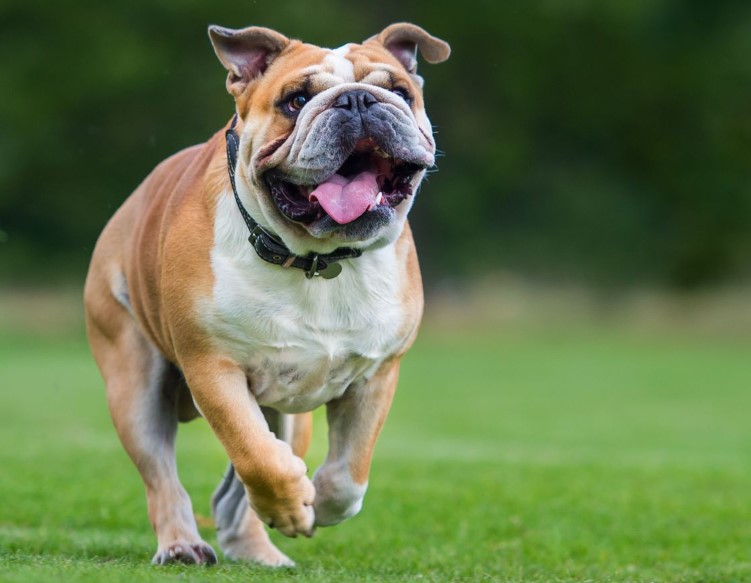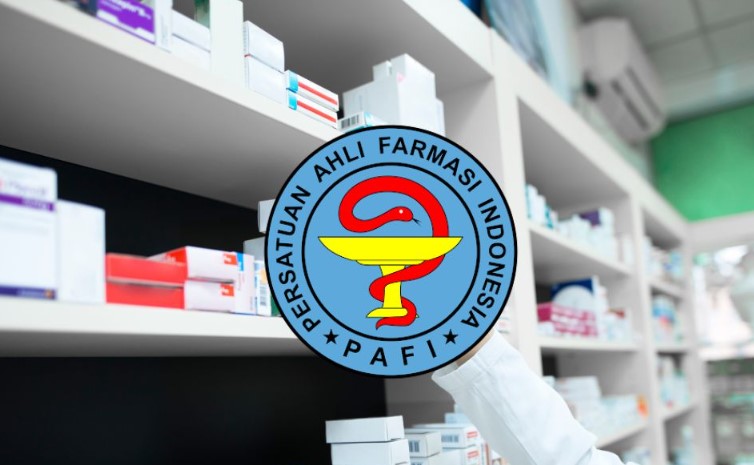Healthy Dog: A Comprehensive Guide to Keeping Your Canine Companion in Top Shape
Introduction: The Importance of a Healthy Dog
As a dog owner, ensuring the health and well-being of your furry friend is undoubtedly one of your top priorities. A healthy dog not only leads a happier and more fulfilling life but also brings joy and companionship to your household. In this comprehensive guide, we will delve into the various aspects of maintaining a healthy dog, from nutrition and exercise to grooming and preventive care. Let’s embark on this journey together to learn how to keep your canine companion in top shape!
1. Understanding the Nutritional Needs of a Healthy Dog
Feeding your dog a well-balanced and nutritious diet is crucial for their overall health and vitality. Dogs require a balanced combination of proteins, carbohydrates, fats, vitamins, and minerals to thrive. It is important to choose a high-quality dog food that meets their specific nutritional requirements based on factors such as age, breed, size, and activity level. Consulting with a veterinarian can help you determine the best diet plan for your furry friend.
2. Feeding Your Dog: A Balanced Diet for Optimal Health
When it comes to feeding your dog, it’s essential to provide a balanced diet that caters to their nutritional needs. A combination of high-quality commercial dog food and occasional home-cooked meals can offer the right balance of nutrients. Include lean proteins, whole grains, fruits, and vegetables in their diet. Avoid feeding them harmful foods such as chocolate, grapes, onions, and excessive amounts of salt or sugar. Adequate water intake is also crucial to keep your dog hydrated.
3. Exercise and Its Role in a Healthy Dog’s Life
Regular exercise is vital for keeping your dog physically and mentally fit. Engaging in physical activities not only helps them burn off excess energy but also aids in weight management and prevents behavioral issues. The type and intensity of exercise required may vary based on your dog’s breed, age, and overall health. Daily walks, interactive play sessions, and mentally stimulating activities like puzzle toys can keep your furry friend happy, healthy, and engaged.
4. The Importance of Regular Veterinary Check-ups
Routine veterinary check-ups are a cornerstone of preventive care for your dog. Regular visits to the veterinarian ensure early detection of any potential health concerns and help maintain your dog’s well-being. During these check-ups, your veterinarian will conduct a thorough physical examination, administer necessary vaccinations, perform parasite screenings, and provide advice on nutrition, dental care, and overall health management.
5. Maintaining a Clean and Hygienic Environment
Creating a clean and hygienic environment for your dog is essential to prevent the spread of diseases and ensure their overall well-being. Regularly cleaning and disinfecting their bedding, food and water bowls, toys, and living areas helps minimize the risk of infections. Additionally, practicing good hygiene by regularly bathing your dog, brushing their coat, and keeping their nails trimmed contributes to their physical health and comfort.
6. Preventive Measures: Vaccinations and Parasite Control
Vaccinations play a vital role in protecting your dog from infectious diseases. Following a vaccination schedule recommended by your veterinarian helps prevent potentially life-threatening illnesses such as distemper, parvovirus, and rabies. In addition to vaccinations, regular parasite control is crucial to safeguard your dog’s health. Fleas, ticks, worms, and other parasites can cause a range of health issues. Your veterinarian can guide you on the appropriate preventive measures for your dog.
7. Common Health Issues in Dogs and How to Address Them
Dogs may experience various health issues throughout their lives. Being aware of common ailments such as allergies, ear infections, dental problems, and joint issues can help you recognize early signs and seek prompt veterinary care. Regular check-ups, a balanced diet, exercise, proper grooming, and preventive care measures can significantly reduce the risk of these health issues. If your dog shows any signs of illness, it’s important to consult a veterinarian for an accurate diagnosis and appropriate treatment.
8. Grooming Your Dog: More Than Just a Pretty Pup
Grooming plays a crucial role in maintaining a healthy and happy dog. Regular brushing helps remove loose hair, prevents matting, and stimulates the skin. It also allows you to check for any skin abnormalities or parasites. Depending on your dog’s breed, grooming needs may vary. Some dogs require professional grooming, while others may need regular nail trimming, ear cleaning, and dental care. Regular grooming sessions not only keep your dog looking their best but also contribute to their overall well-being.
9. The Benefits of Training and Socialization
Training and socialization are essential aspects of raising a well-rounded and healthy dog. Training sessions help establish boundaries, teach basic commands, and prevent behavioral issues. Socializing your dog from an early age exposes them to different environments, people, and animals, helping them develop confidence and good manners. Enrolling in obedience classes or working with a professional trainer can provide guidance and support in training your dog effectively.
10. The Role of Mental Stimulation in a Healthy Dog’s Life
In addition to physical exercise, mental stimulation is crucial for a healthy dog’s overall well-being. Engaging your dog in activities that challenge their intellect helps prevent boredom and destructive behaviors. Puzzle toys, interactive games, and training sessions that incorporate problem-solving tasks can keep your dog mentally sharp and satisfied. Incorporate regular mental stimulation into your dog’s routine to promote their cognitive abilities and enhance their quality of life.
11. Safe and Enjoyable Activities for Dogs and Their Owners
Spending quality time with your dog through fun and engaging activities not only strengthens your bond but also promotes their physical and mental health. Outdoor adventures like hiking, swimming, and playing fetch provide exercise and stimulation. Indoor activities such as hide-and-seek, scent games, and obedience training offer mental challenges. Always prioritize your dog’s safety during these activities and ensure they are suitable for their breed, age, and physical capabilities.
12. Traveling with Your Dog: Tips for a Smooth Journey
Whether it’s a short road trip or a long-distance vacation, traveling with your dog requires careful planning to ensure their comfort and safety. Prior to the journey, acclimate your dog to car rides and consider using appropriate safety restraints or carriers. Pack essentials such as food, water, medications, and comfort items. Plan for regular breaks to allow your dog to stretch, relieve themselves, and stay hydrated. Familiarize yourself with pet-friendly accommodations and attractions at your destination. Consulting with your veterinarian for any necessary travel-related vaccinations or medications is also recommended.
13. Recognizing Signs of Illness and When to Seek Veterinary Care
As a responsible dog owner, it’s crucial to be able to recognize signs of illness in your furry companion. Dogs may exhibit symptoms such as changes in appetite, lethargy, vomiting, diarrhea, coughing, sneezing, or unusual behavior. If you notice any concerning signs, it’s important to consult a veterinarian promptly. Early detection and timely treatment can significantly improve the chances of a positive outcome and prevent potential complications.
14. Caring for Aging Dogs: Meeting Their Changing Needs
As dogs age, their health needs change, and they may require extra care and attention. Regular veterinary check-ups become even more crucial to monitor for age-related conditions such as arthritis, cognitive decline, and dental issues. Adjusting their diet, providing joint supplements, and ensuring their comfort and mobility are essential. Engaging in gentle exercise, maintaining mental stimulation, and providing a calm and safe environment can enhance their quality of life during their golden years.
15. Promoting Dental Health in Dogs
Dental health is a vital aspect of overall well-being for dogs. Poor oral hygiene can lead to dental disease, causing pain, tooth loss, and potential systemic health issues. Implement a dental care routine that includes regular brushing with dog-specific toothpaste, providing dental chews or toys, and scheduling professional dental cleanings as recommended by your veterinarian. Proper dental care ensures fresh breath, healthy gums, and strong teeth for your canine companion.
16. Understanding Dog Behavior and Body Language
Understanding dog behavior and body language is key to effective communication and building a strong bond with your pet. Dogs communicate through a combination of vocalizations, body posture, facial expressions, and tail wagging. Learning to interpret their signals can help prevent misunderstandings and potential conflicts. Additionally, recognizing signs of stress, fear, or anxiety in your dog allows you to address their needs and provide a calm and supportive environment.
17. The Impact of Environment on a Dog’s Health
A dog’s environment significantly influences their overall health and well-being. Factors such as temperature, humidity, air quality, noise levels, and exposure to toxic substances can affect their health. Providing a safe and comfortable living environment, protecting them from extreme weather conditions, and minimizing exposure to harmful chemicals or plants are crucial for maintaining a healthy dog. Regularly inspecting your dog’s environment for potential hazards and making necessary adjustments ensures their safety.
18. Creating a Stress-Free Environment for Your Dog
Dogs can experience stress and anxiety, just like humans. Creating a stress-free environment is essential for their emotional well-being. Ensure they have a designated space where they can retreat and relax when they need a break. Implementing a consistent routine, providing mental stimulation, and using positive reinforcement during training can help alleviate stress. Avoiding sudden changes, loud noises, and stressful situations contributes to a calm and harmonious living environment for your canine companion.
19. Alternative Therapies: Exploring Natural Approaches
In addition to conventional veterinary care, alternative therapies can complement the well-being of your dog. Therapies such as acupuncture, chiropractic care, herbal supplements, and massage can provide relief from pain, aid in rehabilitation, and promote overall balance and wellness. However, it’s important to consult with a qualified professional and seek their guidance before incorporating any alternative therapies into your dog’s healthcare regimen.
20. The Bond Between Humans and Dogs: Benefits for Both
The bond between humans and dogs is truly special, offering numerous benefits to both parties. Dogs provide unconditional love, companionship, and emotional support to their owners. They can help reduce stress, lower blood pressure, and alleviate feelings of loneliness and depression. Additionally, dogs can motivate their owners to stay active and live a healthier lifestyle. The bond formed with a dog is unique and rewarding, enriching the lives of both humans and their canine counterparts.
21. When to Consider Getting Another Dog as a Companion
Adding another dog to your family as a companion for your current furry friend can be a wonderful decision. However, it’s important to consider various factors before making this choice. Evaluate your dog’s temperament, energy level, and socialization skills. Consider their age, breed, and individual preferences. Introducing a new dog requires careful planning, gradual introductions, and proper supervision to ensure a harmonious relationship between the dogs. Seeking guidance from a professional dog trainer or behaviorist can help facilitate a successful introduction.
22. The Role of Exercise in a Dog’s Mental Health
Exercise not only benefits a dog’s physical health but also plays a crucial role in their mental well-being. Engaging in regular physical activity helps reduce anxiety, alleviate boredom, and release pent-up energy. It stimulates the production of endorphins, which promote a positive mood and overall mental wellness. Incorporating a variety of exercises and interactive games into your dog’s routine ensures their mental stimulation and emotional balance.
23. The Human-Dog Connection: Exploring the Science
Scientific research has explored the deep bond and connection between humans and dogs. Studies have shown that interacting with dogs can release oxytocin, the “love hormone,” in both humans and dogs, promoting feelings of happiness and strengthening the bond. Dogs are highly attuned to human emotions and can provide comfort and support during difficult times. The human-dog connection is a fascinating area of study that continues to uncover the unique and mutually beneficial relationship between the two species.
24. Promoting Responsible Dog Ownership
Responsible dog ownership is crucial for the well-being of dogs and the harmony of communities. It involves providing proper care, meeting their needs for nutrition, exercise, grooming, and medical care. Responsible owners also prioritize training, socialization, and behavior management to ensure their dogs are well-mannered and safe in public spaces. Additionally, responsible ownership includes adhering to local laws and regulations, such as licensing and leash requirements. By being a responsible dog owner, you contribute to a positive image of dogs and create a safer and more compassionate society.
25. Conclusion
Taking care of a dog’s health encompasses various aspects, from nutrition and exercise to preventive care and emotional well-being. By prioritizing their needs and providing a loving and supportive environment, you can ensure a long and healthy life for your canine companion. Remember to consult with your veterinarian for personalized advice and stay attentive to any changes or signs of illness. A healthy dog is a happy dog, and their well-being brings joy and fulfillment to your life as well.
Frequently Asked Questions (FAQs)
Q1: How often should I feed my dog?
A1: The frequency of feeding depends on your dog’s age and breed. Puppies usually require more frequent meals (3-4 times a day), while adult dogs can be fed twice a day. Consult with your veterinarian to determine the appropriate feeding schedule for your dog.
Q2: Can I feed my dog a homemade diet?
A2: While homemade diets can be an option, it’s essential to ensure they provide all the necessary nutrients in the right proportions. Consult with a veterinary nutritionist to create a balanced homemade diet plan for your dog.
Q3: How much exercise does my dog need?
A3: The amount of exercise needed varies depending on your dog’s age, breed, and overall health. Most dogs benefit from at least 30 minutes to 1 hour of physical activity every day. However, high-energy breeds may require more exercise to stay mentally and physically stimulated.
Q4: How can I prevent dental problems in my dog?
A4: Regular dental care is crucial to prevent dental problems in dogs. Brush your dog’s teeth regularly, provide dental chews or toys, and schedule professional dental cleanings as recommended by your veterinarian.
Q5: When should I spay or neuter my dog?
A5: The ideal time to spay or neuter your dog depends on their breed, size, and overall health. Consult with your veterinarian to determine the best timing for your dog, considering factors such as growth patterns and potential health benefits.
Q6: How can I help my dog with separation anxiety?
A6: Separation anxiety can be challenging for both dogs and their owners. Gradual desensitization, training exercises, and providing a calm and safe environment can help alleviate separation anxiety. In severe cases, consulting with a professional dog behaviorist may be necessary.
Partner Site : Business Tips , Health News, Future Technology, Home Decorating, Travel Tips, Classic Car, Online Education, Business Law, Women Fashion, Beauty Salon



